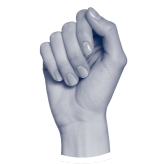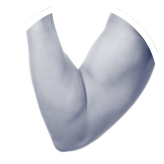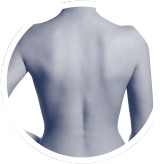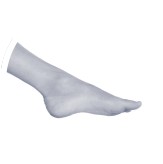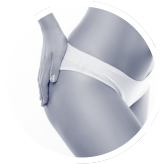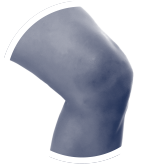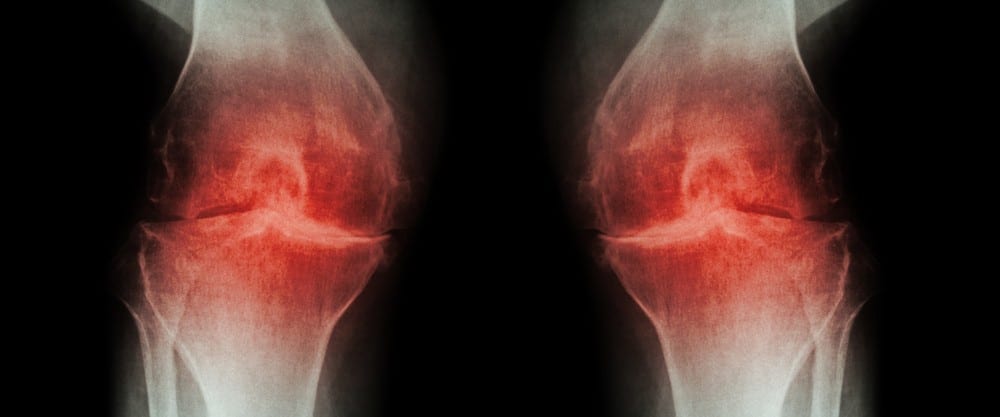
Life expectancy has increased dramatically in the past century. In 1900, the average life expectancy for the UK was for 45 years old. By 2011, this has increased to 81 years old – doubling in little over a century. This extra time that people have allows them to enjoy life and gives us time to achieve our ambitions. However, while our life expectancy has increased, our overall health has declined. An increasingly sedentary lifestyle, poor diet, combined with diseases that increase with age, such as osteoarthritis, are becoming common. We may be lasting longer but we may be lasting longer in weakness and pain.
Arthritis – The Common Factor
There are a wide variety of diseases and conditions that more prone to occur with age. But arthritic conditions are one of the most common – in particular in the knees and other joints that bear weight.
Osteoarthritis is the most common arthritic condition that affects that cartilage and the bones of the joints. It may result in reduced mobility, pain, stiffness, grating/cracking sounds and loss of muscle. On weight bearing joints, it may increase the likelihood that the joint will ‘give way’ – leading to an increase in the number of falls.
With 33% of over 45s and 42% of over 75s having the condition, it is affecting 7.3 million people in England alone.
Causes of Osteoarthritis
There are many causes of why osteoarthritis develops in the body:
Age
As we age, our body becomes weaker and repairs itself less quickly. It is this that causes osteoarthritis, as the body cannot keep up with the repairing and replacing worn cartilage.
Weight
Those who are heavier will see an increase in osteoarthritis, especially in the hips, knees ankles. The heavier weight will apply more pressure onto the cartilage and quickly wear out.
Injury/Trauma
If you have had an injury to your joint, such as a sporting injury or a particularly bad fall, osteoarthritis may occur at an earlier age. The injury (and any treatment afterwards) may have altered the mechanics of the joint. This would slow the cartilage from healing in the body.
Other Conditions
Sometimes trauma is not purely an external cause. Sometimes, other medical conditions can increase the risk of osteoarthritis. Other forms of arthritis, such as gout or rheumatoid arthritis can speed up the deterioration of the cartilage.
Gender
Women are more likely to suffer from osteoarthritis and more severely compared to men.
Prevention is Better Than a Cure
Like most medical conditions, it is much better to prevent an illness than to cure one. Osteoarthritis is no exception. While many assume arthritic conditions are caused by things beyond your control, there are a few preventative measures and treatments you can do.
The first is to ensure that if you are not overweight. The more weight you carry, the more pressure you will be placing upon your joints and cartilage which will increase the wear of them. This is particularly true for knees and hips. Try eating healthier and avoid foods high in sugar, salt and saturated fats.
The second is to increase your activity levels. While exercise and diet go hand-in-hand, exercise will help lose the weight but also ensures your joints stay limber while also strengthen the muscles. Strengthening the muscles can help stabilise the hips and knees. A full gym workout is not necessary, but adding extra activity to your day, such as walking to work, is enough to have health benefits.
What You Can Do to Reduce Effects of Osteoarthritis
There is no cure for osteoarthritis but you can manage the condition so that it doesn’t get worse as you age.
Much like prevention, if you have an inactive and unhealthy lifestyle then it is time to change. Losing weight and building muscle is key to support and reduce stress on the joints.
There also a variety of different medical treatments that can help alleviate the pain and add more mobility to your joints. General painkillers, suck as paracetamol, may be prescribed by your GP or bought over the counter. If you notice a mild pain, it is always better to take painkillers earlier than wait for the pain to become unbearable. Other painkillers, such as ibuprofen, could be bought over the counter that reduces the inflammation caused by osteoarthritis. If the pain is more severe, opioids, such as codeine, may be prescribed. Codeine and other painkillers may have side effects so be wary and never exceed the maximum dose stated on the package.
There is a cream that is used for osteoarthritis that affects hands or knees or called capsaicin. This cream affects the nerves that send pain messages to the affected area. However, it may take a few weeks to become fully effective.
If traditional medication is not alleviating the pain then steroid injections into the joints may work. However, it is recommended not to have more than 3 injections per year.
For more information about the causes and treatments of osteoarthritis, then contact London Bridge Orthopaedics or call +(44) 207 692 0675.
For more health and medical news and blogs, follow us on Facebook, Twitter and LinkedIn.


